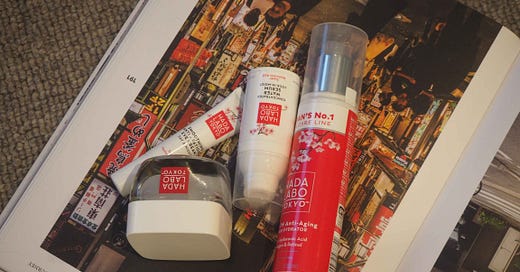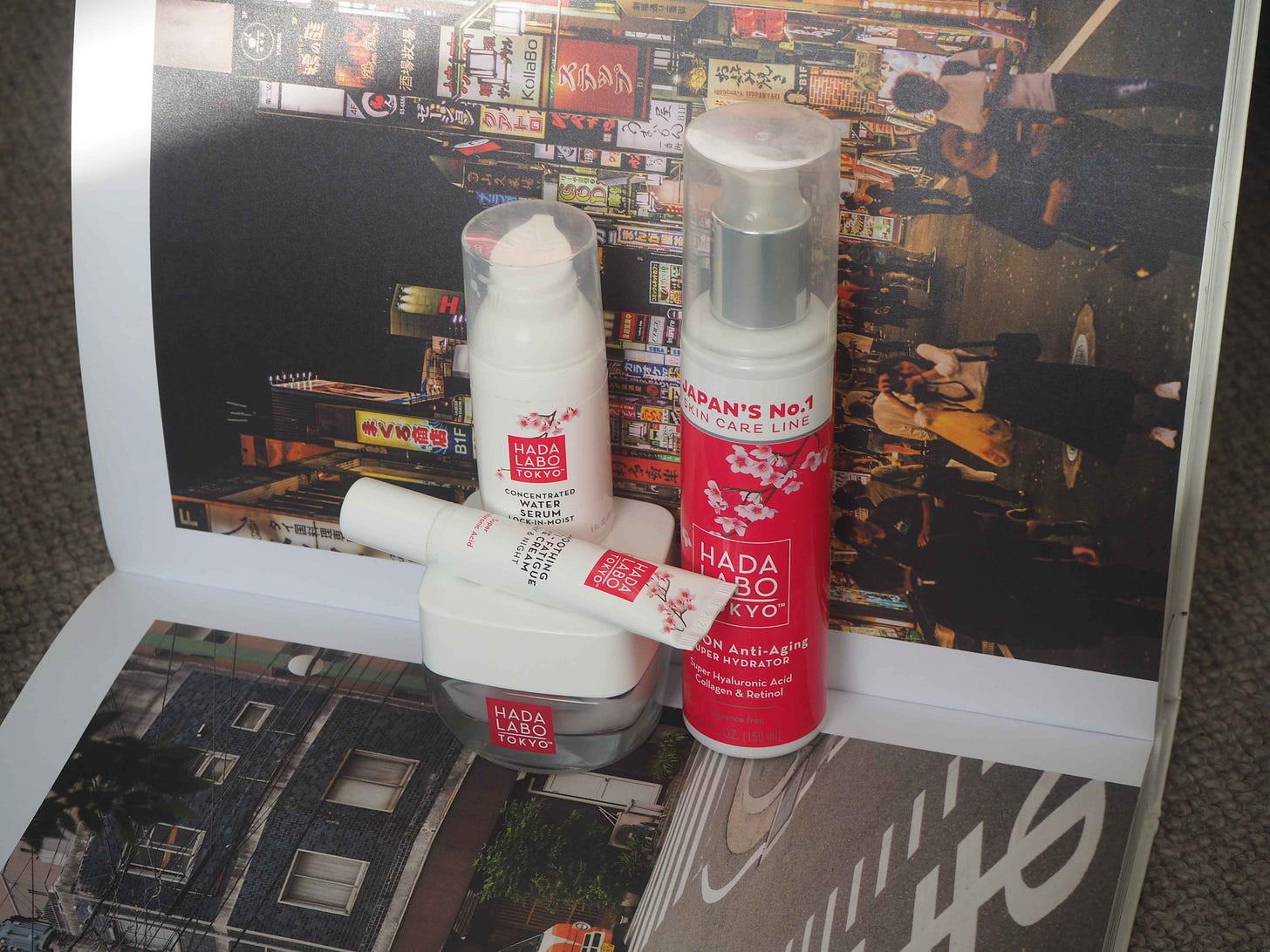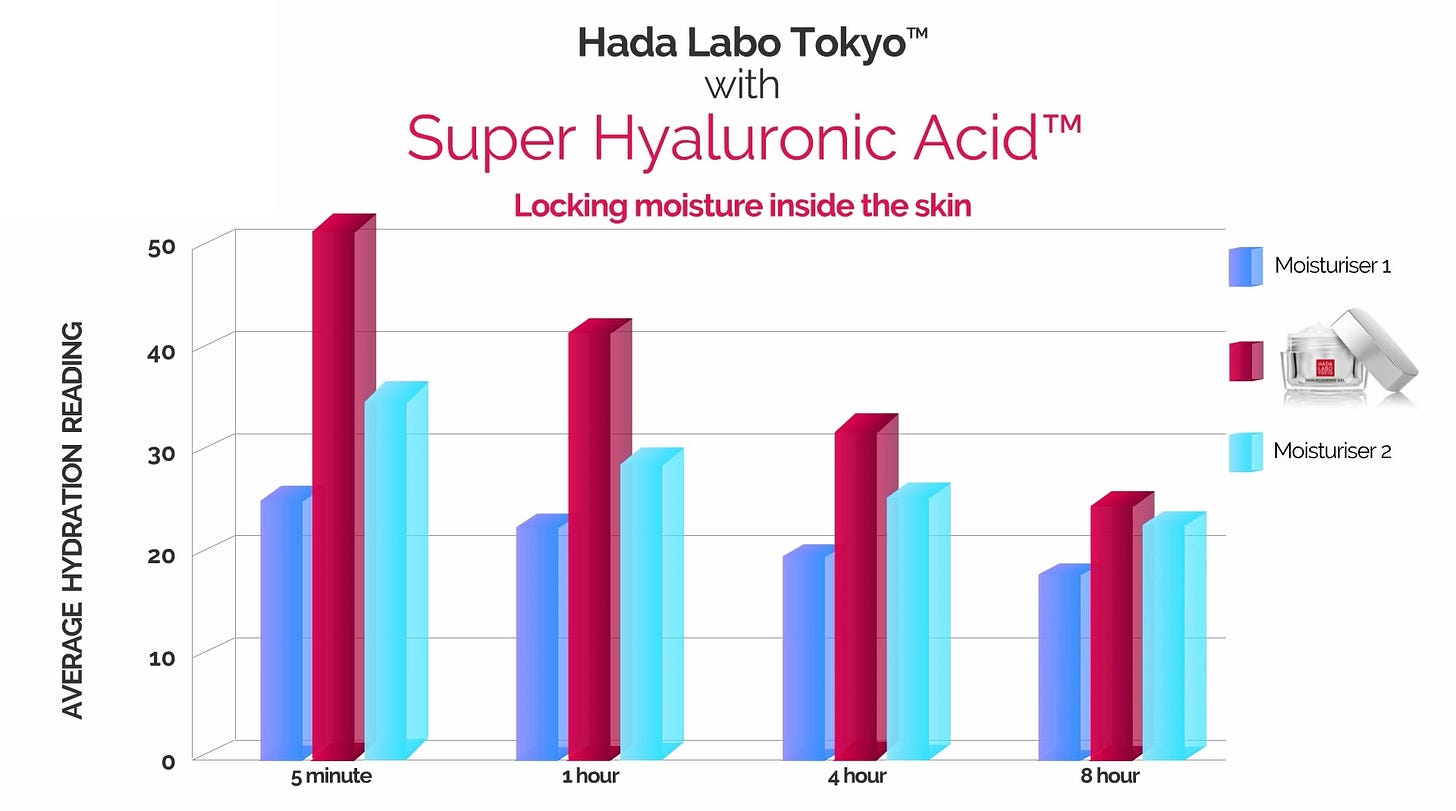Welcome to the Hada Labo Tokyo world. A pillar of the J-Beauty skincare community.
If you’re a skincare connoisseur, you will probably try this brand at least once in your lifetime. Whether you discover it by walking through the brightly-lit cosmetic stores in Japan or the Asian beauty store in an Australian inner city, you will surely find a section purely dedicated to Hada Labo.
Hada Labo came onto the scene in 2004, by the Japanese Pharmaceutical company Rohto Pharmaceuticals, who have over 100 years of experience in creating cosmetic and pharmaceutical products. The brand is simple, reliable and the products work in harmony with the skin.
Now, Hada Labo has expanded its range in Australia, by landing a partnership with Priceline, brightly packaged in red and white. I originally bought one product first. But then, I look at the back of the box and there’s a recommended regimen for best skin hydration. Intrigued? I am!
It’s called the Hada Labo skincare ritual: recommended regimen for best skin hydration, which consists of a 4-step Japanese moisturising routine that leads to hydrated and glowy skin. So I thought, why not? So I went back to Priceline on the same day and bought three other products.
This range has a particular ingredient called ‘super hyaluronic acid’. Developed in Kyoto, this is a blend of three different hyaluronic acids at different molecular sizes:
Hyaluronic acid plus (HA+) - penetrates the deepest due to having the smallest molecular size.
Micro hyaluronic acid (micro HA) - can hydrate multiple skin layers.
(I, personally, would love a bit more information on this, because it seems a little obvious that it’s supposed to hydrate the epidermis).
Macro hyaluronic acid (macro HA) - a bigger molecular size, so can form a protective layer on the skin, locking in moisture, and helping prevent product evaporation.
Before the recommended regimen, start with cleansing your face and although Hada Labo has its own cleanser, I decided not to buy it.
The first step is the ‘day-long hydration’, specifically for lightweight toners. The Hada Labo Hyaluronic Acid Moisturising Lotion was the number-one lotion in Japan for seven consecutive years and to this day, one is sold every three seconds. I’ve previously used a Hada Labo toner before, so I dived into the Lotion Super Hydator as if I knew what to expect. Due to the thin consistency and large bottle, the Hada Labo toners will be in your routine forever.
The second step is the serum. My favourite type of hydrating serum is a heavy texture type where you can feel the hydration on the skin and the smoothness. The concentrated water lock-in-moist serum is exactly like this. A little goes a long way - two pumps max. I use one pump, sufficient for both a morning and night routine. It’s super easy to add to any routine, whether it be a 10-step skincare routine or the quick and easy ‘put on products and run out the door’ type of day. Despite being so cautious about not using too much, it was the product that emptied the quickest.
The third step is applying moisturiser, and Hada Labo’s range has two to choose from: the intense hydrating skin-plumping gel and the absolute smoothing & moisturising cream. I picked the gel over the cream to receive a glowy effect on my skin. It’s suitable for both day and night but during the wintertime, I find it’s not enough. Therefore, I prefer using the gel for daytime use only because it gives me a nice glow. That velvety soft feel on the skin from the moisturiser is called the mochi-mochi effect. Hada Labo has specifically formulated their products to have this effect, due to the macro hyaluronic acid. This gel moisturiser is great for the glass skin effect, with bounciness included.
Step four is for eye cream, the smooth anti-fatigue eye cream. As stated in the name, it aims to fight signs of fatigue. This cream dries down quickly and contains collagen, silk tree and caffeine extract to reduce dark circles and puffiness under the eyes.
Ending thoughts:
It is an easy routine to stick to, with a good number of products to help with confusion.
After completing the routine, the skin feels very sticky from the ‘mochi mochi’ phenomenon. However, it does subside and leaves a beautiful softness.
Great for winter, the sticky residue won’t be suitable for a summertime routine due to a mixture of sweat and stickiness. A wet mess.
Not great for intense wintertime and not great for sensitive skin, either, from my own experience of moving house in the dead of winter. My skin ached and unfortunately, this routine wasn’t enough.
I’m intrigued to buy more products from the range, especially their sheet masks.
Mirror Mirror: Beauty Unveiled is an unfiltered, realistic and candid conservation space about the reflection of the beauty industry.
Thank you so much for being here! Feel free to leave a comment with any questions, queries and feedback. And if you liked this, share it with your friends:











